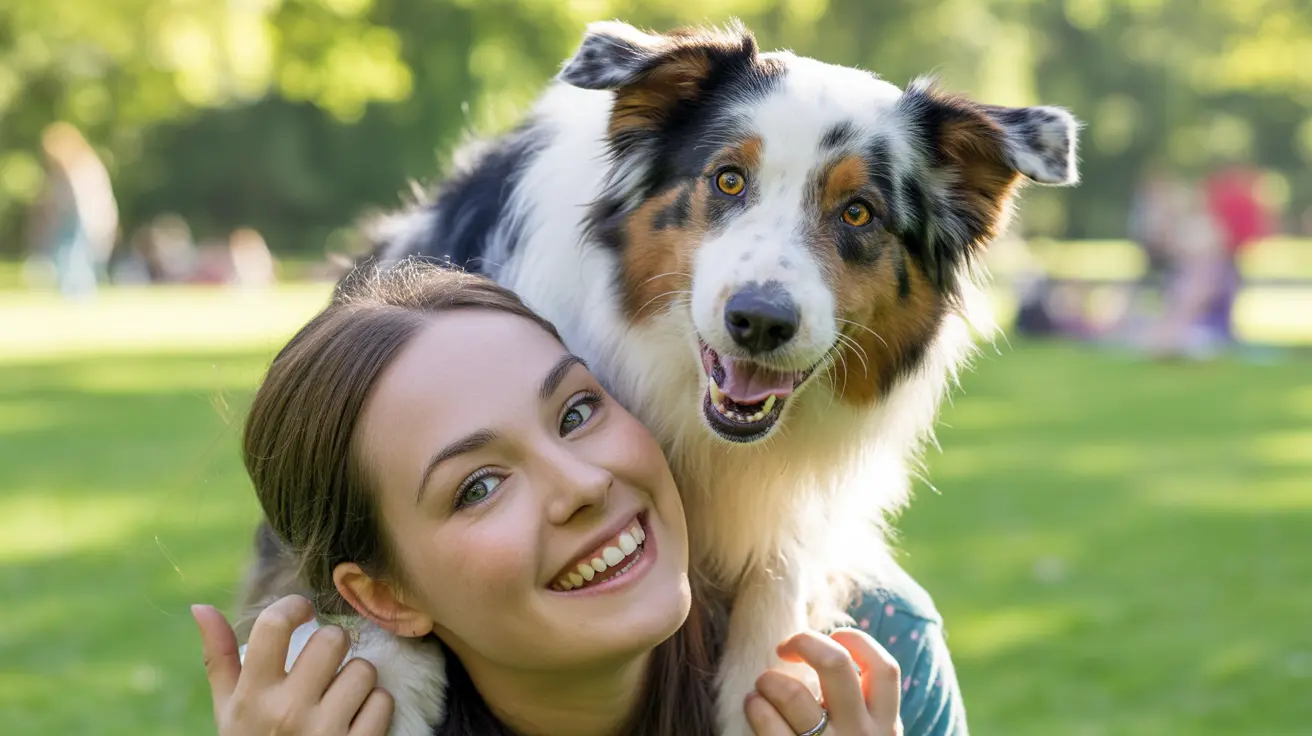Have you ever wondered why your furry friend uses you as their personal stepping stone? Dogs standing on their owners is a common behavior that can stem from various motivations, ranging from simple attention-seeking to more complex emotional needs. Understanding why your dog stands on you can help strengthen your bond and address any underlying issues that may need attention.
This comprehensive guide will explore the various reasons behind this behavior, helping you better understand your canine companion's communication methods and needs. We'll also provide practical solutions if this habit becomes problematic.
Common Reasons for Dogs Standing on Their Owners
Seeking Attention and Interaction
Dogs are social creatures who quickly learn effective ways to get their human's attention. Standing on you is often a direct and successful method of initiating interaction. Whether you respond by petting them, speaking to them, or even gently pushing them away, any reaction can reinforce this behavior.
If your dog is understimulated or feeling lonely, they may resort to this physical approach to request playtime or engagement. This is especially common in high-energy breeds or dogs who don't receive sufficient daily exercise and mental stimulation.
Showing Affection and Strengthening Bonds
Physical contact is a fundamental way dogs express love and trust. When your dog stands on you, they may simply be seeking closeness and showing affection. This behavior triggers the release of oxytocin – often called the "love hormone" – in both you and your pet, reinforcing your emotional connection.
Anxiety and Security Seeking
Sometimes, dogs stand on their owners when feeling anxious or insecure. This might occur during thunderstorms, fireworks, or in unfamiliar situations. Your presence serves as a safe haven, and physical contact helps them feel more secure.
Breaking Down the Behavior
Learned Responses and Reinforcement
Many dogs develop this habit through positive reinforcement. If standing on you has historically resulted in treats, meals, or attention, your dog has learned that this behavior yields desirable outcomes. What might have been cute when they were a puppy can become problematic as they grow larger.
Natural Instincts and Pack Behavior
While rarely about dominance in domestic settings, standing behavior can be traced back to wild canine pack interactions. Modern dogs primarily use this behavior for social bonding rather than establishing hierarchy.
Managing and Redirecting the Behavior
Setting Boundaries
If your dog's standing behavior becomes problematic, establish clear boundaries through consistent training. Reward alternative behaviors like sitting nearby instead of standing on you, and avoid giving attention when they engage in unwanted standing.
Providing Alternative Outlets
Ensure your dog receives adequate physical exercise and mental stimulation daily. A tired dog is less likely to seek attention through standing behaviors. Consider puzzle toys, training sessions, and regular walks to keep them engaged.
Frequently Asked Questions
Why does my dog stand on me to get my attention?
Dogs stand on their owners to get attention because it's an effective way to initiate interaction. This behavior is often reinforced when owners respond, even with negative attention, making it a reliable strategy for dogs to engage with their humans.
Can my dog standing on me be a sign of anxiety or fear?
Yes, dogs may stand on their owners when feeling anxious or scared. This behavior provides them comfort and security, especially during stressful situations like thunderstorms or when in unfamiliar environments.
Is my dog standing on me a way of showing affection and bonding?
Absolutely! Physical contact, including standing on you, is often a sign of affection and trust. Dogs use this behavior to strengthen their bond with you and express their love.
How can I stop my dog from standing on me if it becomes a problem?
To stop this behavior, consistently ignore or redirect it, reward alternative behaviors like sitting nearby, ensure adequate exercise and mental stimulation, and consider professional training if the behavior persists.
Does standing on people mean my dog is trying to show dominance?
While standing over others can be a dominance behavior in wild canines, domestic dogs typically stand on their owners for attention, affection, or security rather than dominance. Modern animal behaviorists generally attribute this behavior to social bonding rather than hierarchical displays.






